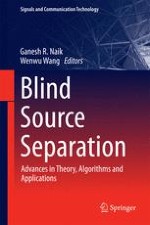
2014 | OriginalPaper | Chapter
1. Quantum-Source Independent Component Analysis and Related Statistical Blind Qubit Uncoupling Methods
Authors : Yannick Deville, Alain Deville
Published in: Blind Source Separation
Publisher: Springer Berlin Heidelberg
Activate our intelligent search to find suitable subject content or patents.
Select sections of text to find matching patents with Artificial Intelligence. powered by
Select sections of text to find additional relevant content using AI-assisted search. powered by